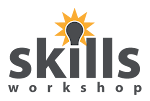The first resource for July is a delightful E1-2 pronoun resource from Amanda Burgess. We had a bit of trouble tracking down the original source of the royalty free clip art she had used but found it eventually at Purdue University http://tell.fll.purdue.edu/JapanProj/FLClipart/ (scroll down and click ‘Pronouns - by Mr B H Bill’).  I mention this here because the same site also includes some very useful, clear monochrome line drawings depicting verbs (100+), adjectives, transport, etc.
I mention this here because the same site also includes some very useful, clear monochrome line drawings depicting verbs (100+), adjectives, transport, etc.
When I add curriculum links I know many of them off by heart (sad – eh!) but pronouns have not been covered in detail on the site. Searching for the correct references (*I use the handy DIUS online versions of the curricula to search – see bottom) threw up a somewhat irritating discrepancy between the ESOL curriculum and the Literacy curriculum – not the first by any means!
ESOL learners are introduced to pronouns at E1-2; at Entry 3 they are expected to know the name ‘pronoun’ and understand how and when pronouns are used. (Rs/E3.1a - know the names and understand the use of key grammatical forms, such as tenses, conjunctions, articles, adverbs, adjectives, negative, pronoun, phrase at this level and, how they carry meaning…).
In the Literacy Curriculum there is no mention of pronouns until Level 1 (Rs/L1.1 - understand the terms tense, negative, adverb, pronoun, phrase …).
At Level 2 the focus, for Literacy and ESOL, is on the accurate use of pronouns and clarity of writing. Nonetheless, there are intriguing differences in the wording of the descriptors.
You might be thinking: ‘So what?’ESOL (Ws/L2.3a) use pronouns to lessen repetition and improve the clarity of writing
Literacy (Ws/L2.3) use pronouns so that their meaning is clear
-know the term pronoun and be able to identify personal and relative
pronouns, e.g. I, me, we, us, who, which
-understand and be able to apply the knowledge that pronouns are used to replace and refer to nouns, to avoid repetition
-know that, when using pronouns, it must be clear to what or to whom they refer, and to check this when proof-reading
-know that pronouns can be over-used, leading to confusion and repetitiveness, and that there are other linguistic strategies that can be employed to avoid this, e.g. referring to a person by name or title, using the former/the latter, alternating these with the pronoun
-understand that pronouns are used to refer to nouns, to avoid having to repeat the noun each time
-know that, when using pronouns, it must be clear to what or to whom they refer, and to check this when proof-reading
-know the term pronoun and be able to identify personal pronouns: I, me, we, us, you, they, them
-understand how these link to the concept of first, second and third person, singular and plural, and subject-verb agreement
Well, if the two curricula are different (which is fair enough) then why is one (ESOL) squeezed, stretched and cajoled to fit the Adult Literacy mould? Note that the ‘mould’ is the National Standards for Adult Literacy - not the Adult Literacy Curriculum.
There again - maybe I am just too pernickety!
* To search the various adult curricula - use these links and then the search box
http://www.dfes.gov.uk/curriculum_literacy/ http://www.dfes.gov.uk/curriculum_esol/ http://www.dfes.gov.uk/curriculum_numeracy/ http://www.dfes.gov.uk/curriculum_preentry/
Finally – after all that sidetracking - if you have any Level 2 pronoun resources (Literacy and/or ESOL!) that you would like to share please email them to me via http://www.skillsworkshop.org/
Thanks (if you've actually read this far!)





No comments:
Post a Comment